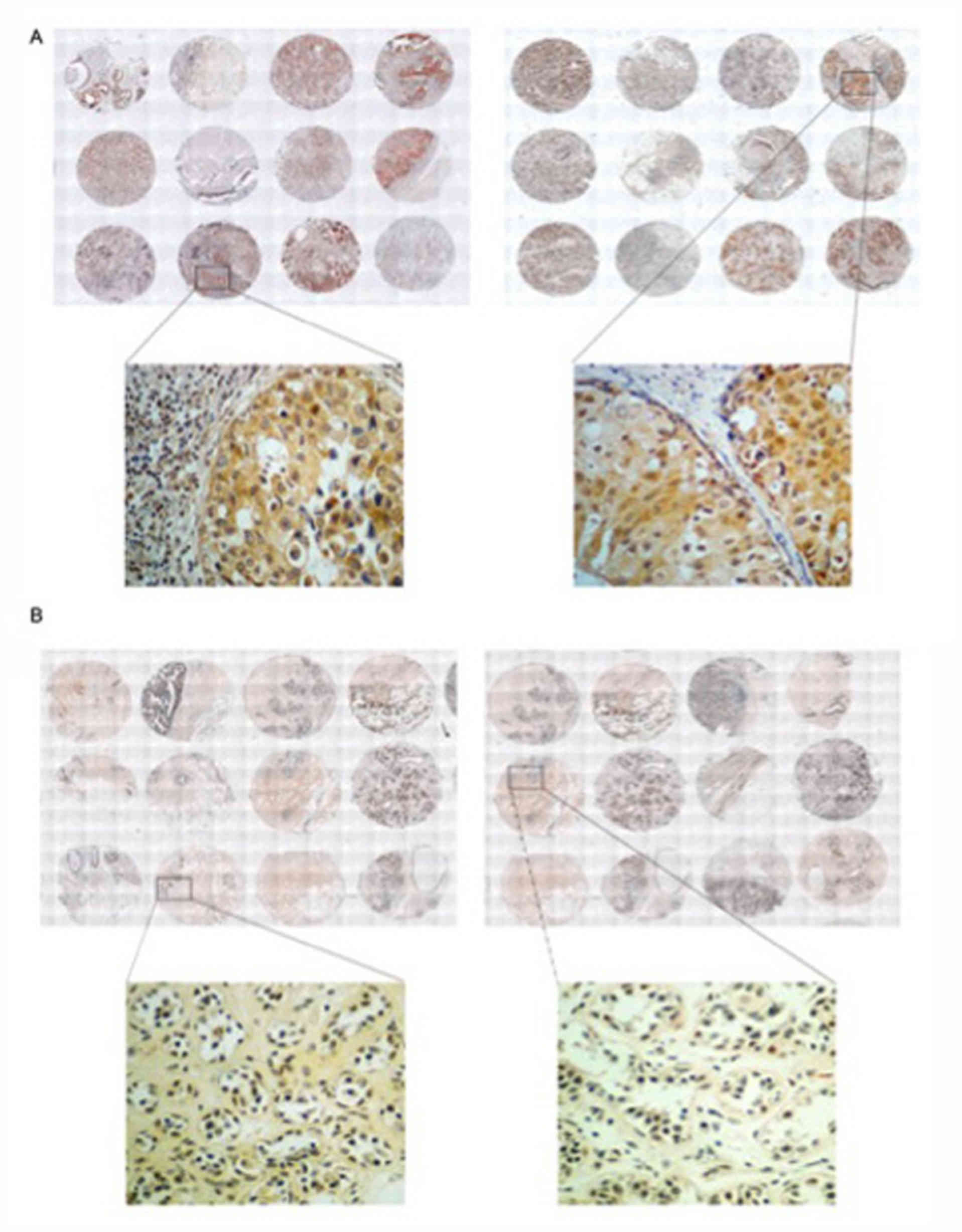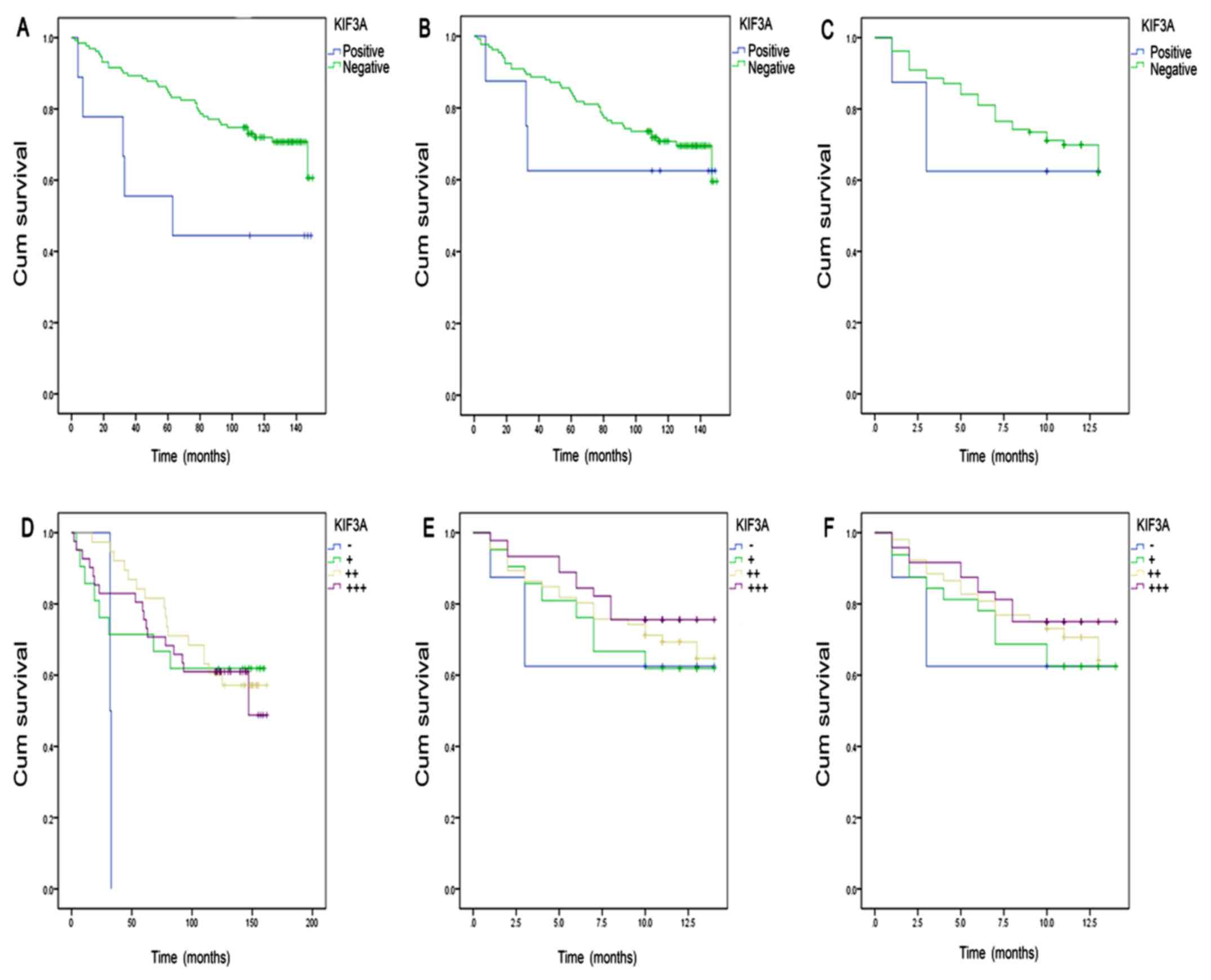High expression of KIF3A is a potential new parameter for the diagnosis and prognosis of breast cancer
- Authors:
- Published online on: February 9, 2018 https://doi.org/10.3892/br.2018.1061
- Pages: 343-349
-
Copyright: © Xia et al. This is an open access article distributed under the terms of Creative Commons Attribution License.
Metrics:
Total
Views: 0 (Spandidos Publications: | PMC Statistics:
)
Total PDF Downloads: 0 (Spandidos Publications: | PMC Statistics:
)
Abstract
Kinesin Family Member 3A (KIF3A) was recognized as a key factor of ciliogenesis and transport system of primary cilia in normal cells. However, its possible function on cancer cells has yet to be identified. In the present study, microarray tissue chips, including 230 breast cancer samples, were applied to determine the KIF3A expression pattern by immunological histological chemistry. Statistical analysis on the KIF3A expression level and the currently used clinicopathological characteristics of breast cancer patients was carried out. Follow‑up data of these patients over 10 years were also used to evaluate the relationship between KIF3A and the survival rate. The expression levels of KIF3A were significantly higher in 140 breast cancer tissues than those of 90 para‑carcinoma samples, which served as controls (P<0.001). In addition, in a further 70 paired samples, the same higher expression level was observed in cancer tissues compared with their self‑paired controls (P<0.001). Furthermore, the high expression of KIF3A in breast cancer tissue correlated with the status of estrogen receptor, androgen receptor, epidermal growth factor receptor and Ki‑67 of breast cancer patients, and were also related to their pathology grade and lymph node metastasis. The survival analysis showed a better survival rate in the patients with a higher expression level of KIF3A. Collectively, the triadic associations of KIF3A, the currently used clinicopathological parameters and survival rate suggest that KIF3A is involved in the tumorigenesis and progression of breast cancer. Thus, KIF3A could be considered a promising novel prognostic index in breast cancer.












